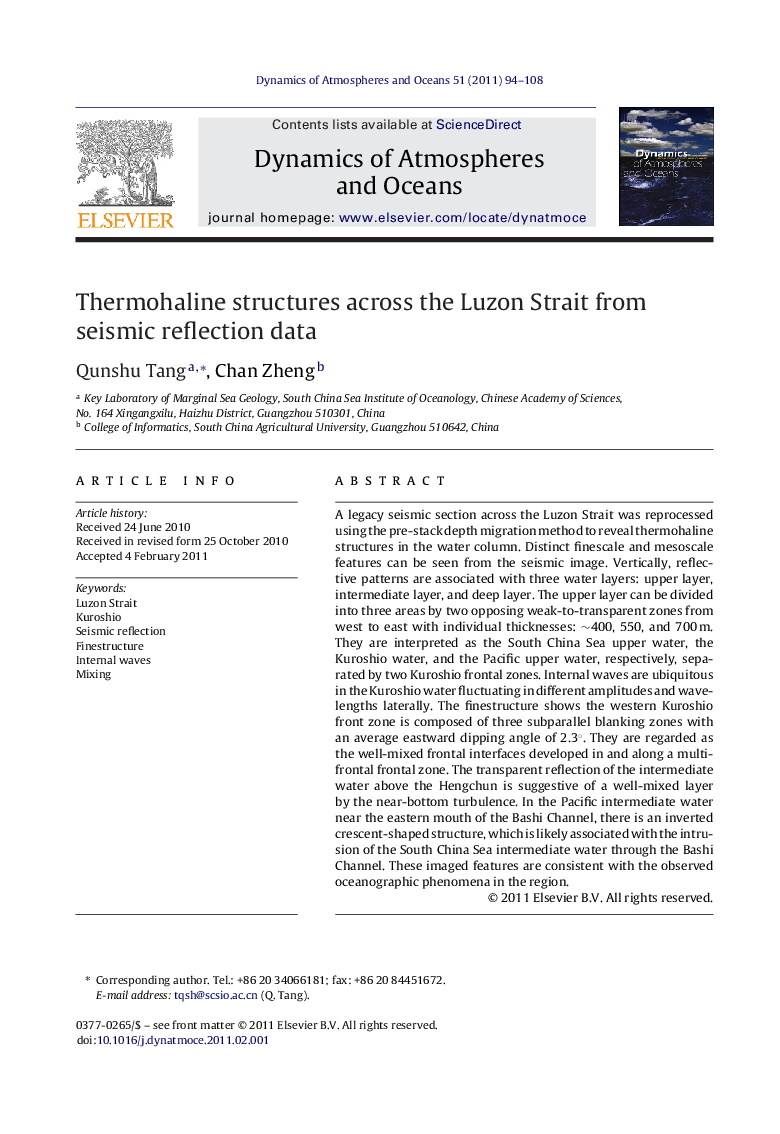| کد مقاله | کد نشریه | سال انتشار | مقاله انگلیسی | نسخه تمام متن |
|---|---|---|---|---|
| 4674118 | 1634237 | 2011 | 15 صفحه PDF | دانلود رایگان |

A legacy seismic section across the Luzon Strait was reprocessed using the pre-stack depth migration method to reveal thermohaline structures in the water column. Distinct finescale and mesoscale features can be seen from the seismic image. Vertically, reflective patterns are associated with three water layers: upper layer, intermediate layer, and deep layer. The upper layer can be divided into three areas by two opposing weak-to-transparent zones from west to east with individual thicknesses: ∼400, 550, and 700 m. They are interpreted as the South China Sea upper water, the Kuroshio water, and the Pacific upper water, respectively, separated by two Kuroshio frontal zones. Internal waves are ubiquitous in the Kuroshio water fluctuating in different amplitudes and wavelengths laterally. The finestructure shows the western Kuroshio front zone is composed of three subparallel blanking zones with an average eastward dipping angle of 2.3°. They are regarded as the well-mixed frontal interfaces developed in and along a multi-frontal frontal zone. The transparent reflection of the intermediate water above the Hengchun is suggestive of a well-mixed layer by the near-bottom turbulence. In the Pacific intermediate water near the eastern mouth of the Bashi Channel, there is an inverted crescent-shaped structure, which is likely associated with the intrusion of the South China Sea intermediate water through the Bashi Channel. These imaged features are consistent with the observed oceanographic phenomena in the region.
Research highlights
► Imaged thermohaline structures correspond well with water mass distributions.
► The extension of Kuroshio is confined precisely by two frontal zones.
► There is strong near-bottom turbulent mixing above the Hengchun Ridge.
► The South China Sea intermediate water flows out through the Bashi Channel.
Journal: Dynamics of Atmospheres and Oceans - Volume 51, Issue 3, April 2011, Pages 94–108